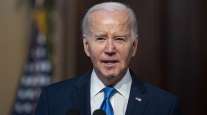Ferro: FMCSA in 2012 Will Mandate EOBRs, Revise CSA, Set Medical Examiner Standards
This story appears in the Jan. 30 print edition of Transport Topics. Click here to subscribe today.
WASHINGTON — The Federal Motor Carrier Safety Administration will move forward in 2012 with regulations concerning medical examiners, a drug and alcohol clearinghouse for drivers and electronic onboard recorders, as well as changes to its Compliance, Safety, Accountability program, Administrator Anne Ferro said.
“We’ve got plenty on our plate,” Ferro said in outlining some of the agency’s plans for the year at a Jan. 24 session on FMCSA’s recent research and analysis at the Transportation Research Board’s annual meeting.
Within the first quarter of the year, the agency will publish a rule setting training and testing standards for medical professionals who conduct required physicals on commercial drivers. FMCSA will maintain the National Registry of Certified Medical Examiners to help drivers find certified examiners.
“It’s a very important tool; it’s one that I think we’re all very excited about,” Ferro said of the registry.
The White House Office of Management and Budget is currently conducting a review of the final rule before publication, according to OMB’s website.
In the third quarter of 2012, FMCSA will propose creating a clearinghouse to track commercial drivers’ positive drug and alcohol tests, Ferro said.
The rule would require employers to post positive results and refusals for testing, according to FMCSA’s rulemaking agenda. Carriers would be allowed to check the database for names of drivers who apply for employment, with the driver’s consent.
The clearinghouse is “another core tool for folks to use in ensuring the right drivers are behind the wheels of those trucks,” Ferro said.
FMCSA will push ahead with its universal EOBR mandate and will schedule “listening sessions” to gather input, she said. It also will take into account an August ruling by the U.S. Court of Appeals for the Seventh Circuit that struck down a more targeted mandate for failing to consider that the devices could enable carriers to harass drivers.
The agency decided in November to drop the finalized rule, which it referred to as “EOBR 1,” instead of appealing the court decision. The proposed universal mandate, known as “EOBR 2,” relies on the same device standards as the earlier rule, so it too must be tweaked (11-21, p. 3).
“We have an opportunity in the months ahead to do a series of listening sessions to learn more from drivers and carriers and others what is meant by ‘harassment’, ” Ferro told the session’s attendees.
The agency also will incorporate technological recommendations from the Motor Carrier Safety Advisory Board and other information it has gathered throughout previous rulemakings, she said.
“We will work very aggressively to continue to advance an electronic onboard recorder rule that makes sense,” she said.
Changes will come this year to CSA, and the agency will preview some of the changes in the second quarter of the year, Ferro said.
“Among the things you’ll see in this preview . . . will be a proposal for a crash accountability process,” she said. It will allow a carrier to tell the agency it is not responsible for a certain crash. FMCSA will then analyze the crash and assign accountability based on its determination of fault.
Around the same time, the agency will “fine-tune” the violation categories within CSA to re-focus the cargo securement category solely on hazardous materials carriers, Ferro said.



